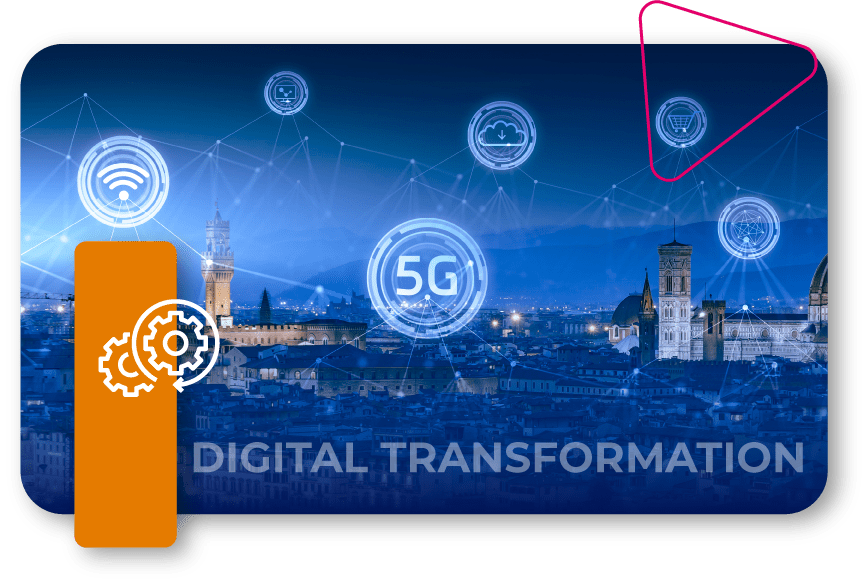Faced with an unprecedented crisis, telecoms have been remarkably responsive to the surging needs for digital connectivity and customers’ rapidly changing habits. Generally, telecom operators have been able to absorb the first shockwaves of this global pandemic with astute resilience, however, there are certain broader, macroeconomic implications that have impacted their progress. The nationwide lockdowns have caused major disruptions in the sales and distribution chains of telecom companies, leading to an evolved environment.
Yet, at the same time, it has accelerated the adoption for digital platforms which suggests that disruptions of COVID-19 have actually enabled the industry to drive digital engagement more efficiently.

In many regions, the telecom sector is still reeling from the social distancing measures which has caused an abrupt disconnect between the retail Point of Sales (POS) and subscribers. In spite of the significant growth in the adoption of digital channels, the digital divide in many regions like Africa has been a roadblock.
As per GSMA intelligence (2020), around 800 million people in the African region still do not have access to mobile internet. Even though many telecom companies are moving towards digitization to bounce back from the blow of this pandemic, the inconsistency and lack of synergy in overall sales and distribution (especially direct and indirect channels) has impeded their growth.
Within the new reality that has emerged in the last two years, the telecom operators have seen a rapid increase in traffic – around 20% to 60% – and have been grappling to match that demand with network capacity. Throughout the pandemic, telecoms have been positioned front and center, especially since all aspects of human interactions have moved online amid the physical-distancing measures.
Thus, from connecting people to healthcare, enabling organizations to allow remote-working and students with distance learning, and helping people connect with family, telecom operators have played a vital role in the hard times of Covid’19.

The Road to Progress Post-pandemic
While there is no crystal ball to predict what the future holds, it is also true that the changing priorities of customers, shifting environments, and mobility restrictions have changed the foundation of telecom business models which makes it very unlikely that they will go back to the previous normal.
1. Adoption of Key Emerging Technologies
Digital transformation across the board for telecoms is the way to mitigate the pressures of Covid-19 and move beyond. Technologies such as 5G, Artificial intelligence, and Internet of Services can no longer be ‘newest frontier’ technologies. Instead, they need to be part and parcel of core strategies and processes.
The digital interaction and engagement across all sectors, but especially for telecoms, has increased exponentially and operating companies are struggling to digitize all interfaces and touchpoints to deliver speed and efficiency. Additionally, owing to the increased network traffic and the urgency to proliferate network capacity, many telecoms have injected millions of dollars of investment into new technologies such as 5G to cope with this unexpected surge.
2. Internet of Things (IoT)
Many telcos are also deploying Internet of Things (IoT) to optimize costs and generate new revenue streams. In the stagnant telecom industries where products and services are primarily commoditized, IoT solutions enable telecom operators to expand their horizons with new and innovative offerings. They provide greater connectivity within the distribution chain which leads to greater cohesion and synergy between platform players like service providers and resellers.
With the help of IoT technology, the telecom operators will also be able to monitor and control their data centers and base stations remotely. This not only enables them to build trust with the other network players but is also highly relevant in the time of the unprecedented coronavirus pandemic. Through this, companies can improve their customer experience by minimizing their downtime.
The challenges faced by telecom companies during the past two years have heightened the need for digital transformation and the importance of adapting to advanced and agile platforms that are built for scalability and flexibility.
3. Fintech and Mobile Money
Fintech and simplification of digital payments has also played an integral role in alleviating the hardships faced by people, especially in developing countries. To counter the government-imposed lockdowns and ban on social movements, many operators simplified the payment and mobile top up process to enable easy access, especially for the unbanked sector.
However, with the way the mobile money market has scaled up worldwide, with billions of transactions daily, signals that ‘payments as a platform’ is a successful model which not only facilitates higher digital value but also allows telecoms to tap into new revenue streams.
Conclusion
The operational and logistical challenges due to the pandemic limited the abilities of telecoms to deliver uninterrupted and smooth services. Due to this, many companies have shifted their focus to the sustainability of operations and improved business continuity. Telecoms are now striving to have more robust processes with minimal blockers to alleviate the risk of downtime or a temporary shutdown of operations.
Despite this, the pandemic has been a largely positive business driver for the industry, especially when it comes to mobile financial services and digital transactions. Be it remote working, distance learning, or digital payment systems, telecoms have acted as an anchor for not only their sales and distribution ecosystem but also for communities as a whole. By facilitating digital connectivity and allowing easy access to digital platforms, telcos have leap frogged years ahead.
In the wake of this crisis, the telecom operators are trying to build an ecosystem that is more customer-centric and spans beyond the core business operations to serve the objective of consistent and sustainable growth, both of which will be critical in redefining the landscape of the industry going forward.


